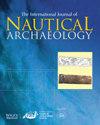新制度经济学视角下的古代塞浦路斯海洋经济
IF 0.6
3区 历史学
0 ARCHAEOLOGY
International Journal of Nautical Archaeology
Pub Date : 2023-01-02
DOI:10.1080/10572414.2023.2195234
引用次数: 0
摘要
包括建筑遗迹,以及进口和本地的陶器和小雕像。他的结论是,与同一时期其他更大的定居点相比,该定居点与有限的小规模航海有关,并强调了这种小规模中心在当代爱琴海海岸和岛屿之间更广泛的交流网络中的作用。这篇文章用几张地图和照片作了充分的说明。下一篇论文是由Chiara Maria Mauro撰写的,他论述了古典时期的封闭港口(λ μ ν κλειστός)的问题,这个术语经常出现在书面资料中,这让现代学者感到困惑。她通过比较古代书面证据和现代考古数据(包括平面图和表格),彻底解决了人们提出的不同解释(军事港口、设备港还是封闭盆地?)的问题,并令人信服地认为,该术语最有可能用于表示自然或人为封闭的各种盆地。编辑随后发表了关于克里特岛沿海定居点在罗马早期和晚期之间的过渡的论文。这篇论文雄辩而包容,结合了关于克里特岛海洋文化景观发展和变化的考古和历史资料。它侧重于从一个拥有众多但规模或潜力很小的沿海定居点向实际城市的转变,这些城市配备了港口设施,沿海人口将在后期聚集在那里。他还谈到了诸如海洋深度和近海岛屿(北部的迪亚岛或东部的库福尼斯岛)的作用等问题。最后一个贡献是乔治·哈里森(George Harisson),他对罗马克里特岛进行了相当精彩的描述,主要涉及该岛的罗马化问题,商业和农业在其发展中的作用,以及罗马帝国统治下该岛现实的复杂性。作者主要根据历史资料和碑文,对克诺索斯的罗马殖民地的存在进行了批判性的描述(他提出了证据,证明没有这样的事情),并强调克里特岛作为罗马帝国内部一个孤立但全球化的实体的双重和复杂性质。最后两篇论文对罗马克里特岛的海洋文化景观进行了极好的概述,不仅将其与当地的发现和条件联系起来,而且还与当代地中海世界的现实联系起来。不幸的是,这最后两篇文章没有任何形式的插图。该卷实现了它的大部分目标:它汇集了不同背景的学者,专门在不同时期和领域,为了展示他们的研究成果,并产生兴趣和讨论希腊的海洋文化景观及其经济,以及文化,政治,宗教,社会和技术环境。这些论文经过充分的研究和撰写,为这些景观的现实提供了新的见解,同时强调了该领域进一步研究的巨大潜力。所提出的不同方法是该出版物的一笔财富,突出了打破陆地和水下考古之间障碍的必要性,以及在讨论中增加对书面证据的研究。小卷的呈现和组织是彻底的,相当连贯,虽然一些进一步的插图将加强它。不幸的是,这本书太短了,无法通过例子和案例研究充分阐述沿海考古学的重要性和潜力,尽管这根本不是编辑和作者的意图。它涵盖了很少的地理区域(一个单一的基克拉迪定居点和克里特岛)和时期(早期青铜时代,古典和罗马),并且没有关于沿海地区(特别是港口和锚地)的自然配置和发展的贡献。这个简短的案例研究列表限制了本卷作为进一步讨论和辩论希腊沿海考古的平台的潜力。然而,这本出版物很重要,因为它强调了在每个历史时期研究希腊海岸线的可能性,并使用了不同的方法,每一种方法都有助于我们进一步了解特定的地理和文化区域。正如书的引言中所强调的那样,它渴望并在很大程度上成功地为进一步研究建立爱琴海海岸考古学提供了一个平台。本文章由计算机程序翻译,如有差异,请以英文原文为准。
The Maritime Economy of Ancient Cyprus in Terms of the New Institutional Economics
ment, including architectural remains, as well as imported and local pottery and figurines. He concludes that the settlement was related to limited small-scale seafaring in comparison with other, larger settlements of the period, and highlights the role of such small-scale centres in wider exchange networks between the coasts and the islands of the contemporary Aegean. The article is adequately illustrated by several maps and photographs. The next paper is by Chiara Maria Mauro, who addresses the issue of the closed harbours (λιμήν κλειστός) of the Classical Period, a term often found in written sources, which has puzzled modern scholars. She thoroughly addresses the problem of the different interpretations that have been suggested (military harbours, fortified harbours or enclosed basins?) by comparing ancient written evidence with modern archaeological data (plans and tables are included), and convincingly argues that it is most likely that the term was used to denote naturally or artificially closed basins of various kinds. The editor follows with his paper on the transition of the coastal settlements of Crete between the Early and the Late Roman Periods. The paper is eloquent and inclusive, combining archaeological and historical data on the development and change of the Cretan maritime cultural landscape. It focuses on the transformation from an area of numerous, but of little size or potential, coastal settlements to actual cities, equipped with harbour facilities, where coastal populations would gather in the later period. He also addresses issues such as sea-depth and the role of offshore islands (Dhia to the north or Koufonisi to the east). The last contribution is by George Harisson, who gives a rather exciting account of Roman Crete, related mostly to the issue of the Romanization of the island, the role of commerce and agriculture in its development, and the complexity of the island’s reality under the Roman Empire. The author gives a critical account, based mostly on historical sources and inscriptions, of the existence of a Roman colony at Knossos (he presents evidence that there was no such thing) and emphasizes the dual and complicated nature of Crete as an isolated yet globalized entity within the Roman Empire. The two last papers offer an excellent overview of the maritime cultural landscape of Roman Crete by relating it not only to local finds and conditions but also to the reality of the contemporary Mediterranean world. Unfortunately, these last two articles include no illustrations of any kind. The volume achieves most of its aims: it brings together scholars of different backgrounds, specializing in different periods and areas, in order to present the results of their studies and to generate interest and discussion about the maritime cultural landscape of Greece and its economic, as well as cultural, political, religious, social and technical environment. The papers are well-researched and written and provide new insights into the realities of these landscapes, at the same time underlining the great potential for further studies in the field. The different approaches presented are an asset to the publication, highlighting the need to break the barrier between terrestrial and underwater archaeology, as well as to add the study of written evidence to the discussion. The presentation and organization of the small volume is thorough and quite coherent, although some further illustrations would have enhanced it. The book is, unfortunately, too short to address adequately the importance and potential of coastal archaeology through examples and case-studies, albeit this was not at all the intention of the editor and authors. It covers very few geographical areas (a single Cycladic settlement and Crete) and periods (Early Bronze Age, Classical and Roman) and has no contributions concerning the natural configuration and development of coastal areas (especially of harbours and anchorages). This short list of case-studies limits this volume’s potential to serve as a platform for further discussion and debate over the coastal archaeology of Greece. Nevertheless, this publication is important, because it highlights the possibilities for study of the Greek coastline in every historical period and using different methodologies, each contributing to the furthering of our knowledge of specific geographical and cultural areas. As is underlined in the book’s introduction, it aspires, and largely succeeds, to form a platform for further studies towards the establishment of a coastal archaeology of the Aegean.
求助全文
通过发布文献求助,成功后即可免费获取论文全文。
去求助
来源期刊

International Journal of Nautical Archaeology
ARCHAEOLOGY-
CiteScore
1.40
自引率
20.00%
发文量
30
期刊介绍:
The International Journal of Nautical Archaeology is a forum for the exchange of ideas and research relevant to all aspects of nautical and maritime archaeology. Published twice a year in print and online, each issue of 224 pages contains peer-reviewed original articles, notes and book reviews. IJNA addresses the theory and practice of archaeology and related academic disciplines which investigate human associations with water and waterborne craft of all periods throughout the world, on seas and inland waters. Aiming to encourage a fuller understanding of the maritime past within its wider context, IJNA keeps readers abreast of the latest discoveries, new interpretations and theoretical approaches.
 求助内容:
求助内容: 应助结果提醒方式:
应助结果提醒方式:


